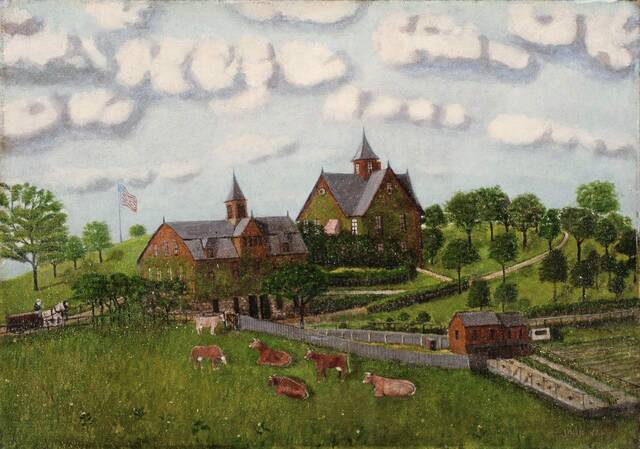Behind the Art: Pittsburgh's John Kane was first renowned self-taught artist
(Editor’s note: Behind the Art is a recurring series highlighting artistic works throughout the county.)
John Kane was both a rough-and-tumble immigrant laborer and a self-taught artist of renown.
Born in Scotland in 1860, he emigrated to the United States at age 19. He landed in the Pittsburgh area, where he worked for the railroad, mined coal and stoked the coke ovens of Henry Clay Frick.
He also was a boxer who fought World Heavyweight Champion James “Gentleman Jim” Corbett to a draw.
Kane’s life was marred by tragedy, including the amputation of part of his left leg after an accident and the death of an infant son, leading to alcoholism, depression, estrangement from his family and an itinerant lifestyle.
From drawing on the sides of railroad cars, he went on to become the first self-taught artist to achieve critical acclaim in the United States.
He submitted paintings to the 1925 and 1926 Carnegie Internationals at the Carnegie Museum of Art in Pittsburgh. Though the works were rejected, they caught the eye of a curator who convinced jurors to accept Kane’s “Scene in the Scottish Highlands” for the 1927 exhibition.
From there, his fame quickly grew, and he had his first one-man show in New York in 1931. Kane died in 1934.
The Greater Latrobe School District Art Conservation Trust was an early purchaser of Kane’s work, acquiring his oil painting, “Steele Farm,” in 1945.
“I always say, it would have been fascinating to know him, but I wouldn’t have wanted to be married to him,” said Barbara Nakles, a member of the art conservation trust and its former longtime chair.
“Steele Farm” depicts a large house on a rise at the center of the work, overlooking outbuildings, a garden and cows in a field. At the left, the farmer approaches his home in a horse-drawn wagon.
Floating above the pastoral scene are puffy, cotton-ball clouds, a signature element of Kane’s work.
“His clouds are always very unusual and very distinctive,” Nakles said.
Many viewers see words spelled out in Kane’s clouds, Nakles said. In the case of “Steele Farm,” the artist’s message has been interpreted as either “Here” or “Hell.”
After Kane’s death, his wife sold many of his paintings to art dealers.
“The dealers painted over the clouds to make them look more like clouds,” Nakles said. “They thought the paintings would sell faster if people didn’t see dirty words in them.”
“Steele Farm” was one of the few Kane paintings that escaped being retouched.
Kane’s work was featured in 2022 exhibitions at the Heinz History Center in Pittsburgh and The Westmoreland Museum of American Art in Greensburg.
His paintings are included in collections at the Carnegie Museum of Art, Metropolitan Museum of Art, Museum of Modern Art, Detroit Institute of the Arts and others, and in many private collections.
Shirley McMarlin is a Tribune-Review staff writer. You can contact Shirley by email at smcmarlin@triblive.com or via Twitter .
Remove the ads from your TribLIVE reading experience but still support the journalists who create the content with TribLIVE Ad-Free.


